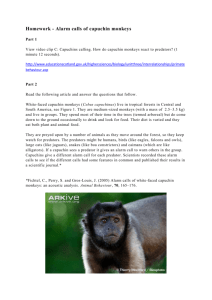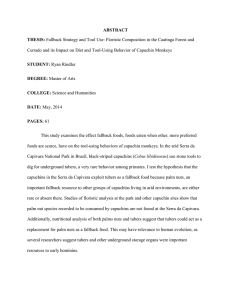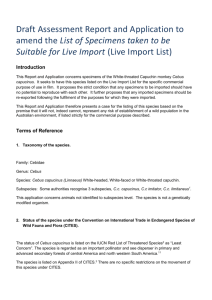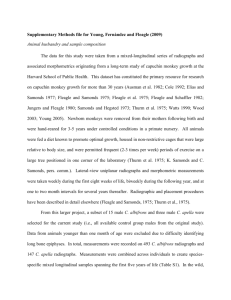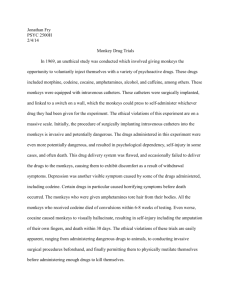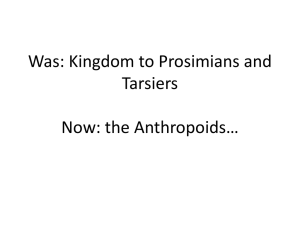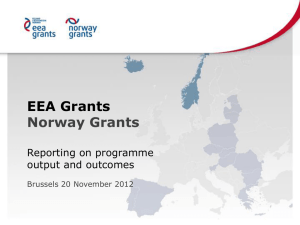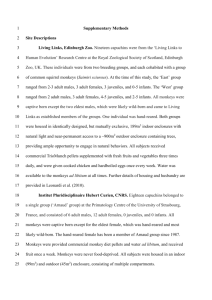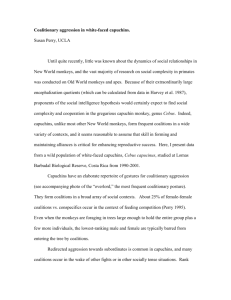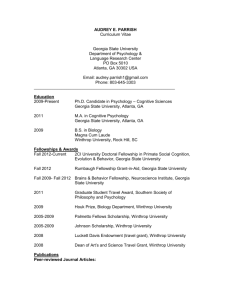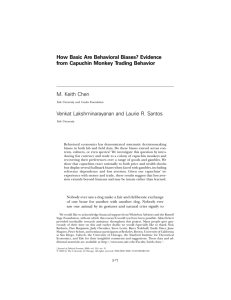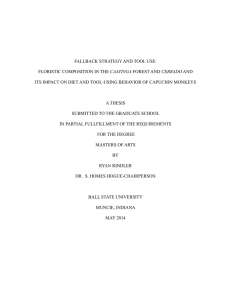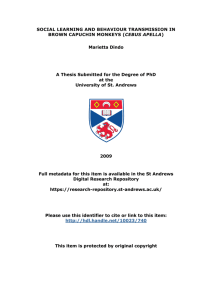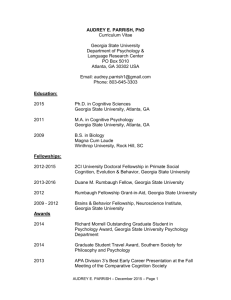Capuchin data analyses
advertisement
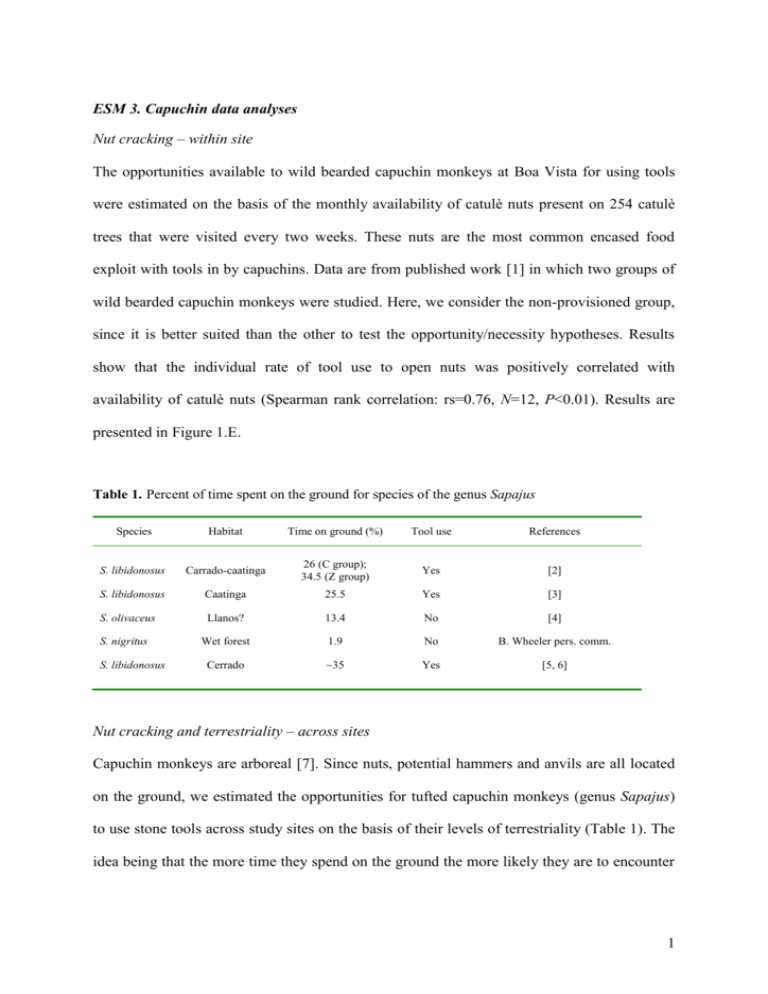
ESM 3. Capuchin data analyses Nut cracking – within site The opportunities available to wild bearded capuchin monkeys at Boa Vista for using tools were estimated on the basis of the monthly availability of catulè nuts present on 254 catulè trees that were visited every two weeks. These nuts are the most common encased food exploit with tools in by capuchins. Data are from published work [1] in which two groups of wild bearded capuchin monkeys were studied. Here, we consider the non-provisioned group, since it is better suited than the other to test the opportunity/necessity hypotheses. Results show that the individual rate of tool use to open nuts was positively correlated with availability of catulè nuts (Spearman rank correlation: rs=0.76, N=12, P<0.01). Results are presented in Figure 1.E. Table 1. Percent of time spent on the ground for species of the genus Sapajus Species Habitat Time on ground (%) Tool use References S. libidonosus Carrado-caatinga 26 (C group); 34.5 (Z group) Yes [2] S. libidonosus Caatinga 25.5 Yes [3] S. olivaceus Llanos? 13.4 No [4] Wet forest 1.9 No B. Wheeler pers. comm. Cerrado ~35 Yes [5, 6] S. nigritus S. libidonosus Nut cracking and terrestriality – across sites Capuchin monkeys are arboreal [7]. Since nuts, potential hammers and anvils are all located on the ground, we estimated the opportunities for tufted capuchin monkeys (genus Sapajus) to use stone tools across study sites on the basis of their levels of terrestriality (Table 1). The idea being that the more time they spend on the ground the more likely they are to encounter 1 and combine the elements necessary to perform tool use in order to crack open nuts. We plotted % time spent on the ground against the presence of tool use in nut cracking. Tool use in nut cracking was only present at study sites with high levels of terrestriality (>24% time spent on the ground). Results are presented in Figure 1.F. Nut cracking and fruit availability – within site We assessed the necessity hypothesis for tool by plotting monthly values for Food Availability Index (FAI) for Fruit and Food Availability Index for Invertebrate against individual tool use rates. Data are from published work [1]. The individual rate of tool use to open nuts was not correlated with monthly availability of Fruit (Spearman rank correlation: rs=0.08, N=12), nor with monthly availability of Invertebrates (Spearman rank correlation: rs=-0.65, N=12). Results are presented in Figure 1. K & L. REFERENCES [1] Spagnoletti, N., Visalberghi, E., Verderane, M.P., Ottoni, E., Izar, P. & Fragaszy, D. 2012 Stone tool use in wild bearded capuchin monkeys, Cebus libidinosus. Is it a strategy to overcome food scarcity? Anim. Behav. 83, 1285-1294. [2] Spagnoletti, N. 2009 Uso di strumenti in una popolazione di Cebus libidinosus allo stato selvatico in Piauí, Brasile. Rome, Università La Sapienza di Rome. [3] Moura, A.C.A. & Lee, P.C. 2004 Capuchin stone tool use in Caatinga dry forest. Science 306, 1909. [4] Robinson, J.G. 1986 Seasonal variation in use of time and space by the wedge-capped capuchin monkey Cebus olivaceus: implications for foraging theory. Contributions to Zoology 431, 1-60. 2 [5] Sabbatini, G., Stammati, M., Tavares, M., Giuliani, M.V. & Visalberghi, E. 2006 Interactions between humans and capuchin monkeys (Cebus libidinosus) in the Parque Nacional de Brasilia, Brazil. Applied Animal Behaviour Science 97, 272-283. [6] Waga, I.C., Dacier, A.K., Pinha, P.S. & Tavares, M.C.H. 2006 Spontaneous tool use by wild capuchin monkeys (Cebus libidinosus) in the Cerrado. Folia Primatol., 337-344. [7] Fragaszy, D., Visalberghi, E. & Fedigan, L. 2004 The Complete Capuchin. The Biology of the Genus Cebus. Cambridge, Cambridge University Press. 3
